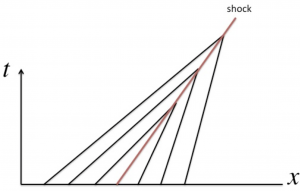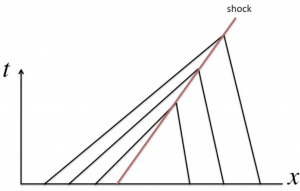Slowly-moving Shock in Shock-Capturing Methods
Research Group: M. Lavell, D. Lee (UCSC)
We develop hybrid numerical algorithms for PPM that combines a new upwind biased slope limiter with a conventional TVD slope limiter. The method is based on using a hybrid upwind limiter that reduces spurious numerical oscillations near discontinuities, and therefore can compute sharp, monotonized profiles in compressible flows when using PPM, especially in Magnetohydrodynamics (MHD) slowly-moving shock regions.
Our proposed approach first detects a local, slowly moving shock, and considers an upwind direction to compute a monotonicity-preserving slope limiter. This new approach, in addition to improving the numerical solutions in MHD to levels that reduce (or eliminate) such oscillatory behaviors, while preserving sharp discontinuities in MHD, is also simple to implement. The method described in this paper has been verified against the results from other high-resolution shock-capturing (HRSC) methods such as MUSCL and WENO schemes.


More broadly, we also study improved strategies in the Riemann solver framework that will help alleviate the inherent oscillatory behaviors in slowly-moving shocks.
